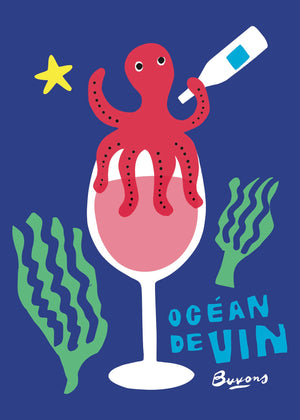
Grapes: field blend of 16 white + red grapes
Region: Languedoc-Roussillon, France
Vintage: 2022
Viticulture: Organic + Biodynamic practicing
Soils: Limestone
Vinification: Co-fermented
Fining or Filtering: None
Sulfur: None
Notes from the Importer: This wine is named after the terroir on which the vines thrive! The grapes come from an exposed, rocky vineyard covered with low bush vines with thick trunks that help them stand up to the wind that pushes down from the mountains behind. No wires tame the vines because Anne-Marie likes to walk through the vineyard as she chooses.
Anne-Marie Lavaysse and her son Pierre bought their farm in the hamlet of Gimios in 1993. The vineyards attached to the farm were abandoned, unworked and had not been treated with chemicals. Anne-Marie decided to continue this and only uses concoctions made from plants that grow among the vines to protect and fortify them. In the winery they do not add anything to the wine at any stage.
The plateau of Gimios is made up of rough limestone full of fossils – their old vines of Muscat Petit Grain, Grenache, Cinsault, Aramon and Alicante (to name a few) give the impression that they pierce straight through the rock, which in fact they do. The yield of the vines is extremely low. Pierre (BMXer, snowboarder, DJ, vigneron) has been involved in the vines and the winery from the beginning but has started to take over from Anne-Marie and continues the work in the same spirit.
In 1993 she bought her first parcel, which was an abandoned vineyard and she put her cow in it to clear the land. For 7 years she pruned aggressively in order to allow the root systems of the vines to reestablish themselves. Her first vintage was 1999, consisting of 3 hectoliters, and to Anne-Marie's surprise, it was good! The INAO (French appellation system to whom all producers have to submit their wine in order to get the appellation) refuses to give her the AOC approval, stating there was a taste of "light" in her wine. In 2000 she resubmitted again and was denied the AOC because the fruit was not oxidized enough for the aoc "Muscat Saint. Jean de Minervois". In 2001 the local farmers who belonged to the coop tried to ban her from harvesting. She left the coop and decided to make vin de table (a dry muscat & a vin doux naturel). By creating her own wine, she came to like wine. She had a small parcel of red (mostly Alicante) and blended it with her muscat à petits grains, put it in a barrel: and produced 200L in 2002. She then looked for red vines, and was able to trade a parcel of garrigue on the aoc muscat that she owned and got the parcel of red fruit in 2006 (coplanted in 1906 grenache blanc, gris & red, carignan, terret blanc, gris & rosé, cinsault, aramon, mourvèdre, alicante, barbarossa, muscat a petits grains. She got the parcel of Rouge de Causse in 2014, pre-phyloxera, planted in 1860's).




